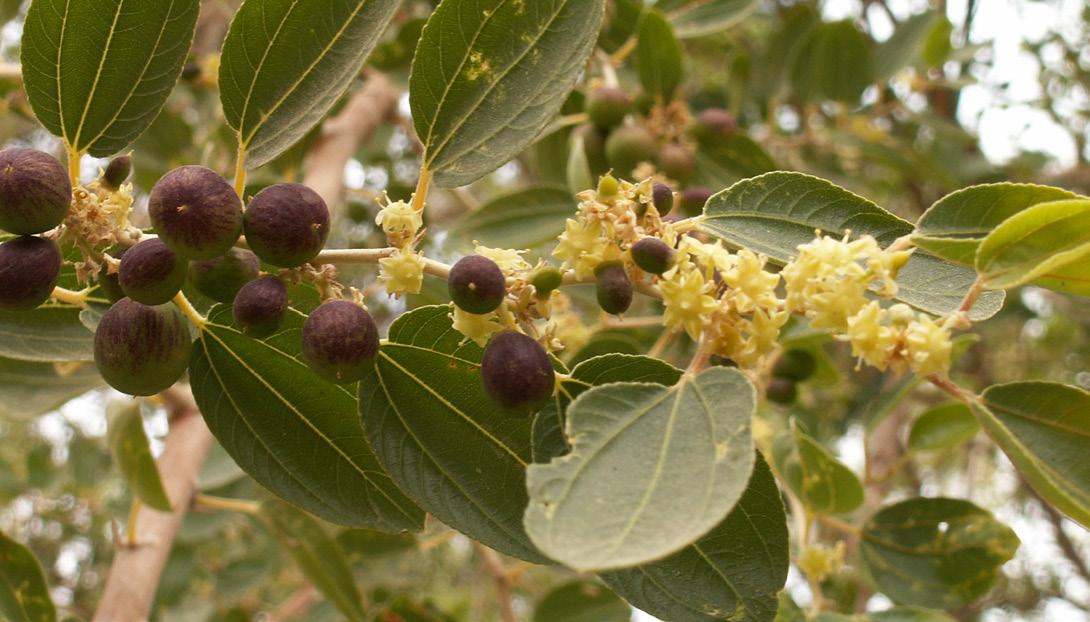Bees for Development Journal 138 April 2021
Sweetness of Sidr According to the Qur’an a lone Sidr tree, Ziziphus spina-Christi or jujube, marks the highest boundary of heaven. On earth, amid the harshness of the Yemeni desert, the sweetness of Sidr honey is cherished as a symbol of perseverance. Yemen has long been renowned for producing some of the best honey in the world. Some of the highest quality comes from bees fed exclusively on the flowers of the Sidr, producing a pale coloured honey with a fiery, almost bitter aftertaste.
“It does not matter who is commanding a checkpoint. They see the beehives in the back of the truck, and we do not have to stop long. Even the Houthis are afraid of bees,” said Said al-Aulaqi. An estimated 100,000 small-scale beekeepers harvest 1,580 tonnes of honey a year, of which 840 tonnes is exported (2020 UN report). Sidr honey sells for up to US$500 (€420) a kilogram in neighbouring Gulf states. Honey connoisseurs maintain that Yemeni honey deserves a global market, but decades of political instability have meant turbulent growth and limited outside reach.
Keen to improve food stability and bring money into the country, the government has identified honey as a key sector for expansion. Aulaqi has kept bees for 10 years, after learning his trade from his uncle. He lost his entire livelihood in 2015, after the Houthis moved into Shabwa and blocked the road to neighbouring Abyan- his bees died after running out of water. It took two years to restart with 300 hives purchased for YER2m (US$8,000; €6,720). Today Aulaqi’s hives are scattered around Shabwa’s mountains, desert and coastal plain, depending on the season. Source www.theguardian.com/ world/2021
The Sidr tree Ziziphus spina-Christi
Photos © Dov Grobgeld (Wikipedia)
While the war has made travel difficult, closing off many roads, for beekeepers, life is much
the same: they are some of the only people in Yemen who can traverse frontlines with ease, moving around every few months searching flowers for their bees.
of hives, each hive in an age group would get the same treatment. They tried to utilise the vigour of a swarm that has newly occupied a hive and is building white comb at a phenomenal rate. There were very few colonies which stayed in hives for years, as a bark hive only lasts 4-5 years, so most colonies were starting in a clean fresh hive. This is very similar to how skep beekeeping was practised in the UK before the advent of the frame hive.
References
10
1.
National Honey Monitoring Scheme, UK Centre for Ecology & Hydrology. https://www.ceh.ac.uk/
2.
Knowledge Exchange Group (a UK Bee Farmers Association Initiative with seed funding from the Waterloo Foundation. Six bee farmers who agree to share performance data on a transparent and confidential basis, measuring and comparing farm outputs and costs, thereby learning from each other’s achievements and mistakes)
3.
Espregueira Themudo,G.; Rey-Iglesia,A.; Robles Tascón,L. et al. Declining genetic diversity of European honeybees along the twentieth century. Sci Rep 10, 10520 (2020). https://doi.org/10.1038/s41598-020-67370-2








